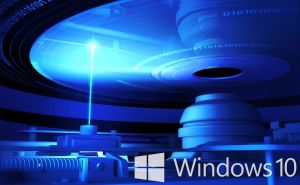 Printed Books or E-books? Pocket or Folio?
Printed Books or E-books? Pocket or Folio?
You may have read our article Bookshelves are Now Compact and Soft, which spoke about applications that allow you to read books from your PC screen. In this article I won't be covering those again; instead, I'll be talking about advantages and disadvantages of all existing reading options, printed or electronic, big or small.
Old School: Paper Books
To my mind, printed books are generally hard to beat. I assume this can be ascribed to my age: when I started reading, there were no mobile phones and no e-books to speak of. The textured feeling of a physical book is a very powerful thing, you will never get it from modern digital toys. That feeling when you turn a page is unforgettable. Besides, if you know the smell of a new book, you will hardly ever pick up a book without wanting to feel it again. A definite plus is that you can't really destroy a book just by dropping it. The downside is, of course, the size and the overall bulkiness. You can only carry around one book at a time, so you're pretty much stuck with it.
 A Tool to Read Elictronic Books from PC
A Tool to Read Elictronic Books from PC
First E-Steps: Reading From the PC Screen
To read electronic books from your PC, you will need additional software, like Amazon Kindle For PC, yBook, calibre, or similar. The books themselves are actually quite tiny in size, but you'll have to save them on an external device if you want to carry them around. Which shouldn't be a problem. The problem is that you're reading these books from a computer screen, which can be dangerous for your eyes and cause eye strain.
 E-book Readers at Your Service
E-book Readers at Your Service
Next level: Electronic Book Readers
Electronic book readers, are another option. They are something of a mix of the first two options: these devices don't weigh too much, so you can carry your books with you wherever you go with no limitations; and yet you've got a file browser with a whole library of e-books in many formats. Whether those are nice to read - that depends on the kind of a screen used in the reader device. Those with e-ink displays (very close in look to real paper) are fine as long as the resolution is high enough, and they also boast long battery life. The only notable disadvantage of these e-book readers is their fragility: they easily break once dropped and will definitely stop working if they get wet.
The Smallest Participants: Phones
The most portable and readily accessible way to read books is by using your mobile phone. The size is their main asset and curse: they're easy to carry around, they're always with you; however, their small (and often low-quality) displays are not the best thing to read from. Besides, reading books drains battery life and can make your mobile phone unusable for other things, like calling and texting.
Still, this year has brought something new to the table: Yotaphone and Pocketbook Cover Reader. The first device is a mobile phone with a second screen, which uses the e-ink technology, perfect for eye-friendly reading and power saving. Pocketbook Cover Reader is what you think it is: a smartphone cover with an e-ink display for reading electronic books.
Results
The new technologies only widen the list of options for reading books, without eliminating any of the existing choices. I myself really enjoy reading old-style books and find mobile phones quite nice for the job, but can't stand reading from my PC at all. So what is your reading medium of choice?






